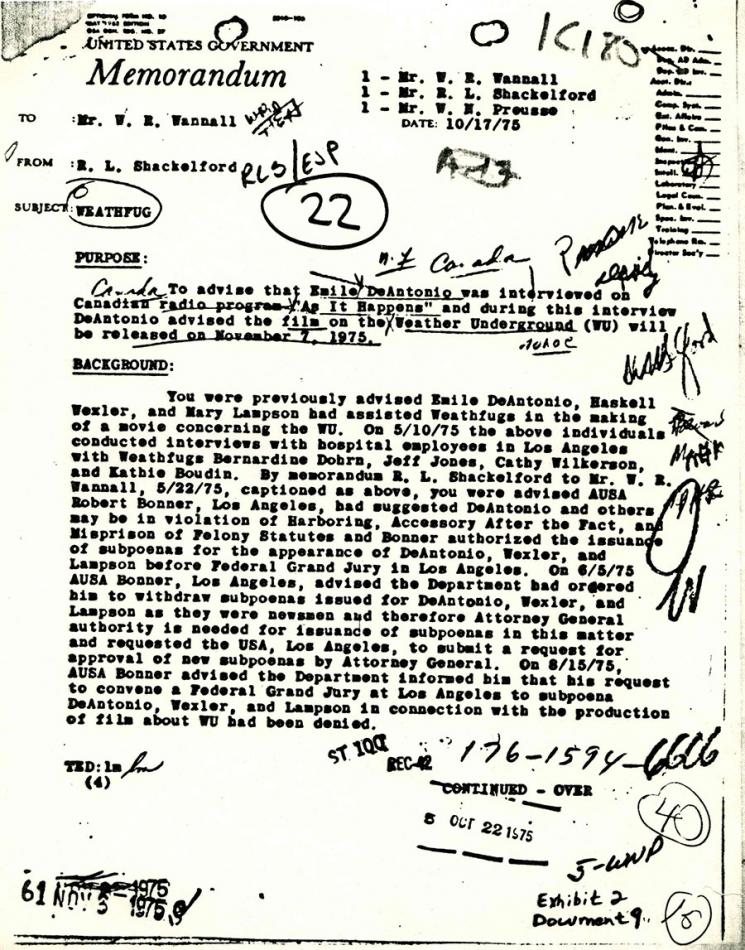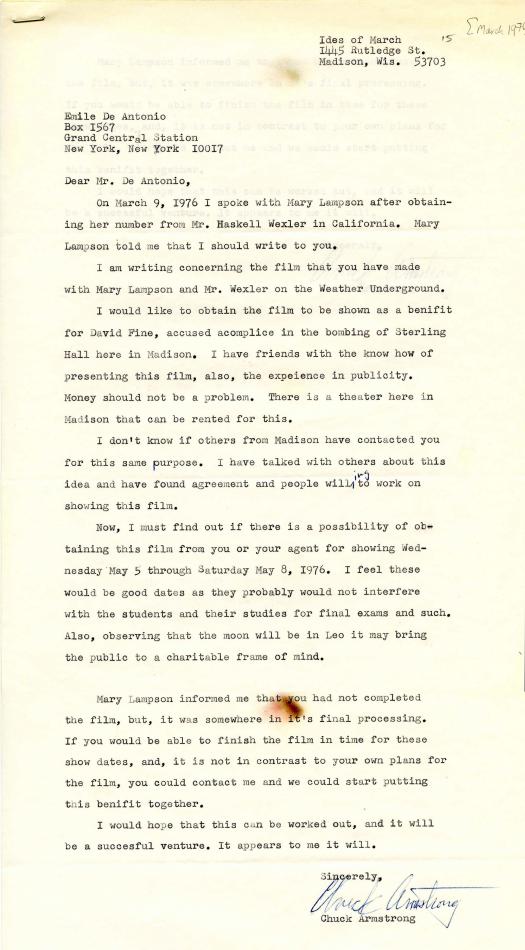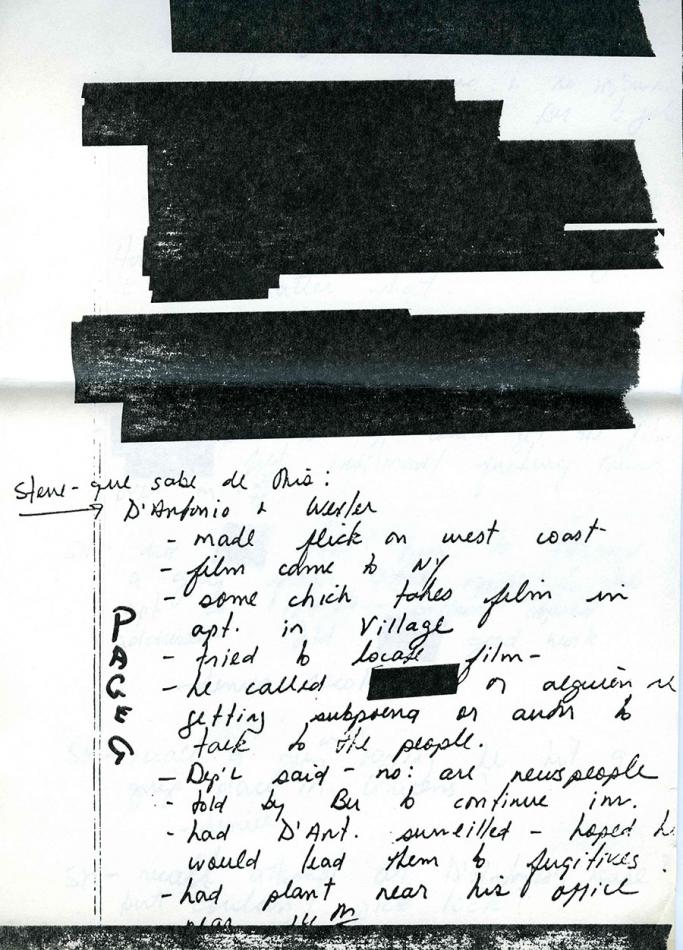
Though de Antonio derided the Weather Underground Organization’s actions at the 1968 Democratic National Convention in Chicago, he shifted his views by 1974. The WUO—a splinter group of the Student for a Democratic Society that advocated for armed revolution—started to publish the newsletter Prairie Fire (contained in the collection), which de Antonio saw as an effort to move away from violent struggle toward education. De Antonio formed a partnership with Haskell Wexler and Mary Lampson to make a film about the fugitives Bill Ayers, Kathy Boudin, Bernadine Dohrn, Jeff Jones, and Cathy Wilkerson. Lampson had worked on Millhouse: A White Comedy and Painters Painting with de Antonio and would go on to make her own films and edit Harlan County USA. Wexler was a rising star in the New Hollywood, shooting Underground between One Flew Over the Cuckoo’s Nest and Bound for Glory, for which he won an Academy Award for Best Cinematography. He was also politically committed, having written and directed 1969’s Medium Cool about a journalist at the 1968 DNC in Chicago who discovers his employer works with the FBI; and having directed and photographed Introduction to the Enemy, a portrait of actress Jane Fonda and her husband, activist Tom Hayden, visiting Vietnam during 1974.
Because the members of the WUO were fugitives, filming interviews with them involved considerable risk. By the time of the interviews, they had been underground for five years and didn’t want their secrecy compromised by providing up-to-date images to law enforcement. To safeguard his subjects, de Antonio employed some of the more avant-garde techniques of his career, leading to a film that is both politically and aesthetically daring. For example, the filmmakers set up the subjects with their backs to a mirror, then shot straight into the mirror, revealing the faces of the interviewer and technicians rather than the subjects (see photo to left). The subjects also discuss the film project on camera, wondering how to make a politically effective film. This self-reflexivity is present, to a lesser degree, in Painters Painting, but it is an inescapable part of Underground. Though there is some archival footage of SDS, Malcolm X speaking, the Days of Rage, the murder of Fred Hampton, and other inciting incidents in the history of the WUO, a large part of the film is dedicated to these carefully shot interviews.


The making of Underground attracted a fair amount of government interference. To demonstrate to the filmmakers that they worked in the community, and that community members agreed with their supposedly radical political beliefs, the fugitives went out in public to ask the opinions of people on the street. This dangerous ploy has the intended effect in the film, but it also attracted the attention of the FBI. FBI records in the collection, requested by de Antonio through the Freedom of Information Act, reveal that FBI agents made copies of the audio tracks of the film during post-production in an effort to find the WUO members. On May 28, 1975, the Department of Justice subpoenaed the filmmakers, ordering them to surrender all the materials of the film. This turned the almost-finished film into a cause célèbre in Hollywood, with numerous stars signing a statement of support, including actors Jack Nicholson, Shirley MacLaine, and Sally Field; directors Terrence Malick, Hal Ashby, and Mel Brooks; and Daniel Ellsberg. The subpoena was eventually withdrawn, which de Antonio believed was an effort to weaken support for the film and filmmakers. The collection includes a full account of this episode, including a list of all supporters, a transcript of the press conference de Antonio, Wexler, and Lampson held in Hollywood, and correspondence between de Antonio and Robert Wise, the head of the Directors Guild of America, about forming a committee to defend the First Amendment rights of filmmakers.
